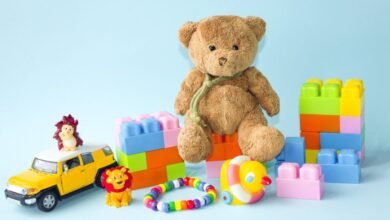13 Signs Your Child May Have ADD

Source:https://www.msn.com/
Children with Attention Deficit Disorder (ADD) and Attention Deficit Hyperactivity Disorder (ADHD) are often misunderstood and mistakenly labeled as lazy, rude, or disobedient due to their behaviors. Despite the outdated term “ADD,” both terms are sometimes used interchangeably, with ADHD including hyperactivity as one of its features. However, ADHD presents with varying symptoms, and not all children with the condition are hyperactive. It’s important to recognize that many behaviors associated with ADHD can also be typical for children, depending on their age and temperament. If parents have concerns about their child’s behavior, they should consult a pediatrician.
Lack of Organization: Current understanding of ADHD recognizes it can manifest in various ways, categorized into predominantly inattentive, predominantly hyperactive-impulsive, or combined presentations. One symptom of inattentiveness in children with ADHD is a lack of organization, which may be linked to differences in the frontal cortex of their brains.
Fidgets and Squirms Constantly: Children with ADHD may display hyperactivity through fidgeting or constant movement, struggling to sit still as if “run by a motor.” This behavior often stems from tasks that lack sufficient dopamine stimulation, as individuals with ADHD typically have lower dopamine levels. Consequently, they find it challenging to stay focused and still during tedious activities.
Talks Excessively: Although most people perceive hyperactivity to only mean that a child can’t sit still, talking excessively can also be a sign of hyperactivity. Boys or girls with ADHD can present with this symptom, but it is a common symptom for girls with ADHD. One of the reasons ADHD in girls often goes undiagnosed is that they’re less likely to be physically hyperactive and more likely to have different symptoms, such as frequent talking.
Trouble Focusing on Tasks: If your child can hyper-focus on enjoyable tasks but struggles with more challenging ones, like homework, it may indicate ADHD. Children with ADHD often find it easier to pay attention when a task provides them with the dopamine they lack. This can lead to “hyper-focus,” where they become so engrossed in a project that they neglect other important tasks, such as homework or personal hygiene.
Acts Without Thinking: ADHD in children can manifest as impulsivity, characterized by acting without considering the consequences. Even if they understand potential repercussions, children with ADHD may still engage in impulsive actions, such as hitting someone out of anger. This behavior can occur at any age, unlike the more typical impulsivity seen in toddlers.
Blurts Things Out Randomly: Children with ADHD may also display impulsivity in their speech, often struggling to think before they speak. Unlike older children who can typically consider the consequences of their words, those with ADHD may blurt out thoughts to avoid forgetting them, partly due to difficulties with working memory.
Interrupts Frequently: Frequent interruptions are a common sign of ADHD in children, often leading to perceptions of rudeness or disrespect. While teaching children not to interrupt is a typical parenting challenge, children with ADHD may continue this behavior into later childhood, even when they understand it’s inappropriate.
Struggles to Control Their Emotions: While learning to balance and regulate your emotions is simply a part of growing up, ADHD often magnifies a child’s most intense feelings. This can look like a child losing their temper easily over minor things or becoming very distraught and emotional over a minor slight. All children experience intense emotions, especially when they’re young. However, children with ADHD experience these emotions more frequently and more intensely than other children.
Runs or Climbs in Inappropriate Situations: Running and jumping during play is normal for children, but if a child frequently engages in these behaviors in inappropriate settings, it may indicate ADHD. While climbing and running on the playground is acceptable, a child with ADHD might climb on furniture at home or run in the classroom when they should be seated. Unlike typical young children, those with ADHD often struggle to understand when it’s appropriate to remain still, continuing these behaviors beyond toddler years.
Loses Items Frequently: Children with ADHD often lose items due to deficits in working memory, which affects their ability to retain new information temporarily. This forgetfulness can lead them to misplace items like pencils or books, as they may not remember where they set things down.
Struggles to Pay Attention When Someone Is Talking: If ADHD is not well understood or if a child hasn’t been officially diagnosed, it can be frustrating when they seem inattentive during conversations. Children with ADHD often fidget and have difficulty focusing, which may manifest as looking around, swaying, bouncing, or even dancing while someone is speaking to them.
Puts Off Tasks That Are Uninteresting to Them: Procrastination is a common sign of ADHD, as children with the condition often struggle to engage with tasks that don’t interest them. Due to lower dopamine levels in their brains, they find it difficult to focus like other children. Instead, they tend to seek out stimulating activities that provide the dopamine boost they need, which can lead to hyper-focusing on those tasks.
Abandons Projects Without Finishing Them: Another common sign of ADHD is children frequently abandoning a task or project without finishing it. Children with ADHD can easily become distracted, which can lead to them shifting their focus to something else even while they’re in the middle of a task. If the project they’re working on is tedious to them, they might abandon it before finishing and choose something more interesting.
Read More: https://childreninfobank.com/safebank/13-signs-your-child-may-have-add/
Image Source: https://www.msn.com/





